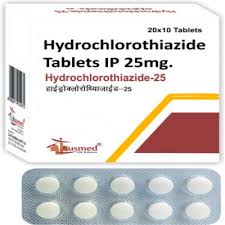Hydroxychloroquine

Hydroxychloroquine is a pharmaceutical agent primarily utilized for the prevention and treatment of malaria, as well as for the management of specific autoimmune disorders such as lupus and rheumatoid arthritis. It is a derivative of chloroquine, another established antimalarial medication. Although hydroxychloroquine has been in use for several decades, it has garnered considerable attention in recent years, particularly in the context of the COVID-19 pandemic.

Primary Applications of Hydroxychloroquine:
Malaria Treatment and Prevention:
Treatment: Hydroxychloroquine is effective against malaria caused by various Plasmodium species, with a particular efficacy against Plasmodium falciparum. It is frequently employed for the treatment of uncomplicated malaria cases.
Prevention: The medication can also serve as a prophylactic measure against malaria, especially in areas where the disease is endemic.
Autoimmune Disorders:
Systemic Lupus Erythematosus (SLE): Hydroxychloroquine is widely prescribed for the management of lupus, a condition characterized by the immune system attacking the body’s own tissues. It aids in reducing inflammation, preventing flare-ups, and alleviating skin rashes and joint discomfort.
Rheumatoid Arthritis (RA): It may be incorporated into treatment plans for rheumatoid arthritis to diminish joint inflammation and enhance overall symptoms.
Other Autoimmune Conditions: Hydroxychloroquine may also be indicated for conditions such as dermatomyositis, psoriatic arthritis, and autoimmune hepatitis.
Mechanism of Action:
Antimalarial Properties: Hydroxychloroquine disrupts the growth of the malaria parasite by impairing its ability to metabolize hemoglobin. Additionally, it raises the pH within the parasite’s acidic food vacuole, thereby hindering its digestion and metabolic processes.
Immunomodulatory Properties: In the context of autoimmune diseases, hydroxychloroquine operates through several mechanisms that help mitigate excessive immune system activity, including:
Inhibition of the production of specific cytokines, which are signaling proteins involved in inflammatory responses.
Reduction of T-cell activation, which plays a role in autoimmune reactions.
Stabilization of lysosomal membranes, potentially contributing to its anti-inflammatory effects.
Dosage:
For the prevention of malaria, the standard dosage is typically 400 mg administered once a week, preferably taken with food or milk. In the case of lupus or rheumatoid arthritis, the initial dosage generally ranges from 200 to 400 mg daily, tailored to the patient’s specific condition and their response to treatment. The precise dosage may differ based on the medical condition being addressed, the patient’s body weight, and other relevant factors.
Side Effects:
Hydroxychloroquine is generally well-tolerated by most individuals; however, it may lead to certain side effects, which include:
Common Side Effects:
– Nausea, diarrhea, or abdominal cramps.
– Headaches, dizziness, or feelings of lightheadedness.
– Skin rashes, particularly with prolonged use.
Serious Side Effects:
– Retinal Toxicity: Long-term use, especially at elevated doses, may result in ocular damage (retinopathy). Regular ophthalmologic evaluations are advised for those on extended hydroxychloroquine therapy.
– Cardiac Issues: Hydroxychloroquine has the potential to prolong the QT interval, impacting the heart’s electrical function, which may result in severe arrhythmias, particularly in individuals with existing heart conditions.
– Severe Hypoglycemia: It may amplify the effects of other medications that lower blood glucose levels.
– Hematologic Toxicity: In rare instances, it can lead to blood-related complications such as anemia or agranulocytosis (a significant decrease in white blood cells).
– Muscle Weakness: Some patients may experience muscle weakness or discomfort, which could indicate myopathy.
Due to the possibility of retinal toxicity, regular eye examinations are often recommended for patients undergoing long-term treatment with hydroxychloroquine, including an initial assessment and subsequent follow-ups.
Hydroxychloroquine and COVID-19:
During the COVID-19 pandemic, hydroxychloroquine was considered as a potential therapeutic option for the virus. However, numerous studies and clinical trials have demonstrated that it does not offer substantial benefits in treating COVID-19, whether in preventing infection or alleviating symptom severity. Both the U.S. FDA and WHO have issued recommendations advising against the use of hydroxychloroquine outside of clinical trials for COVID-19.
Hydroxychloroquine garnered significant media attention and was utilized by certain governments during the initial phases of the pandemic. Nevertheless, subsequent research invalidated its efficacy in treating COVID-19, leading to its considerable decline as a therapeutic option for the virus.
Drug Interactions:
Caution with concomitant medications: Hydroxychloroquine may interact with various other pharmaceuticals, including:
Antacids: These can diminish the absorption of hydroxychloroquine.
QT-prolonging agents: The combination of hydroxychloroquine with medications that extend the QT interval may heighten the risk of severe cardiac arrhythmias.
Digoxin: Hydroxychloroquine has the potential to elevate the serum levels of digoxin (a medication for heart conditions), which could result in toxicity.
CYP450 Enzyme Interactions: As hydroxychloroquine is metabolized in the liver, it may interact with other drugs that affect liver enzymes.
Considerations and Contraindications:
Pregnancy and Breastfeeding: Hydroxychloroquine is deemed safe for use during pregnancy when the advantages surpass the risks. It is also present in breast milk, although the associated risks to infants are generally regarded as minimal.
Kidney and Liver Disease: Individuals with existing liver or kidney issues should exercise caution when using hydroxychloroquine, as it may worsen conditions in these organs.
Conclusion:
Hydroxychloroquine is an effective treatment for malaria, lupus, and rheumatoid arthritis. However, its administration should be carefully monitored due to potential adverse effects, particularly with prolonged use. Although it was initially explored for the treatment of COVID-19, it was ultimately determined to be ineffective for this condition. As with any medication, it is essential to balance the benefits against the risks. It should be administered under the supervision of a healthcare professional.

Leave a Reply